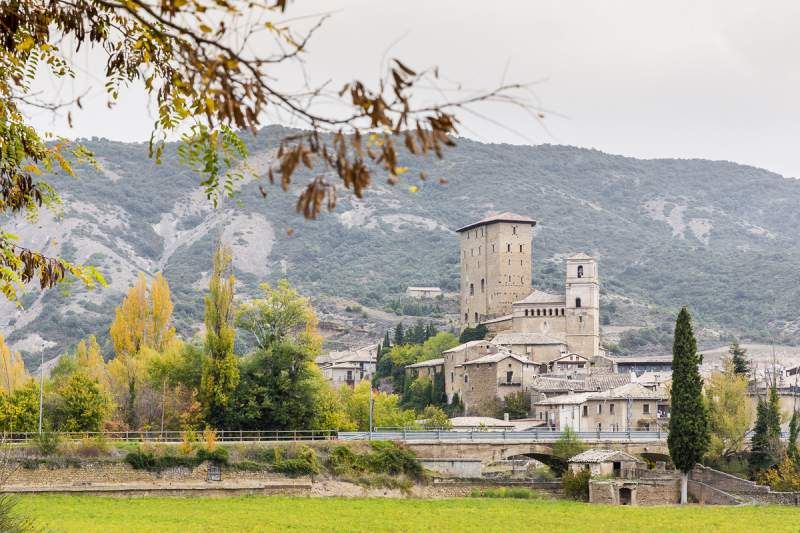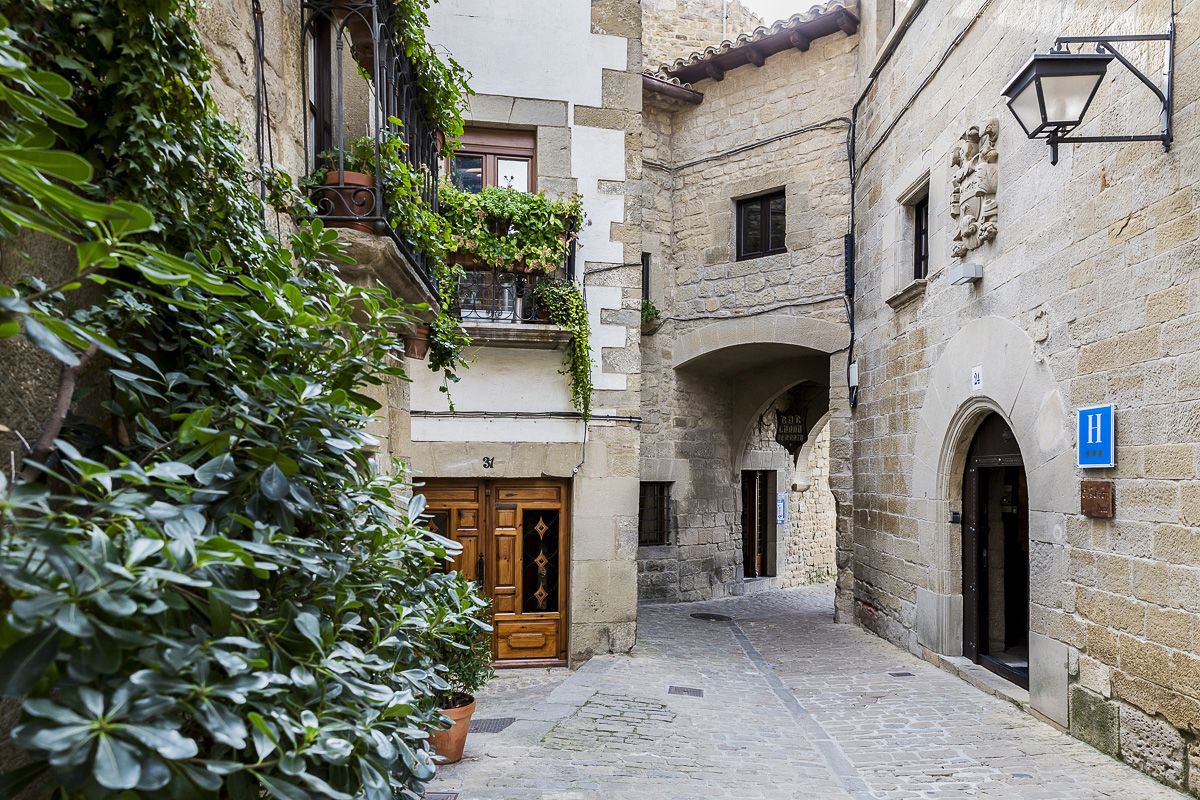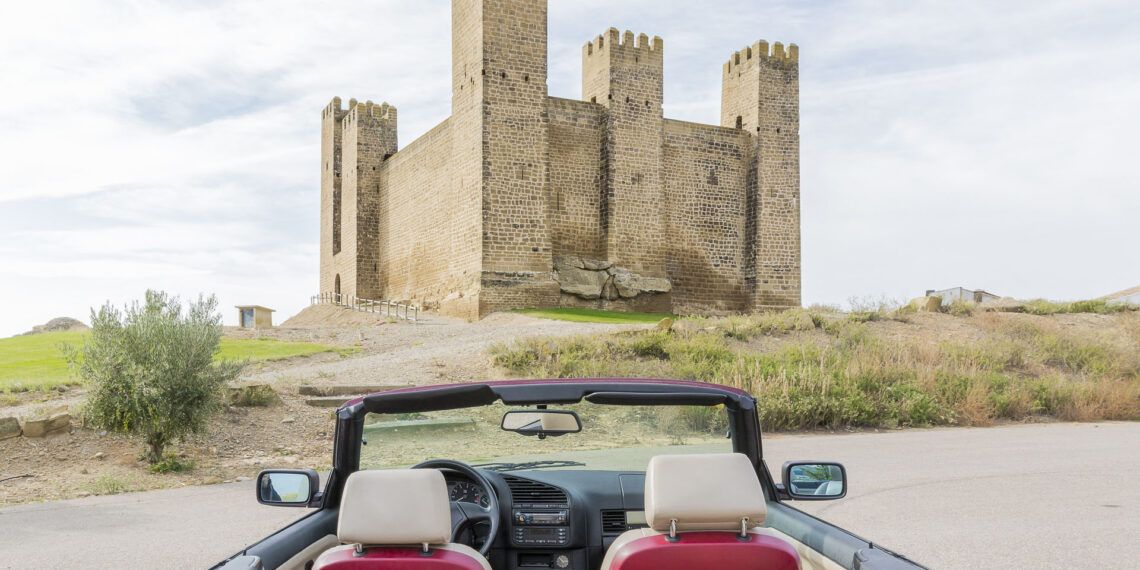The Cinco Villas (five villages) are a collection of five fascinating towns located within the Jewish quarters of Aragón in Spain. This Aragonese region contains several interconnected geographical points where Jews settled during their golden period in Spain. Following this route during your stay in Aragon presents an excellent opportunity for a family vacation filled with history and culture, achievable within one or two days.
The Cinco Villas region is the largest and most significant of the area, stretching from the right bank of the Ebro to the pre-Pyrenees between Navarra and Huesca. This historical fact highlights the rich cultural heritage of the region. It is worth noting that Jewish quarters existed in some of its main towns, including Tauste, Biel, Uncastillo, Sos del Rey Católico, and Ejea de los Caballeros (its capital), from the 12th to the 14th century until the expulsion. The Jewish families in the area have formed a strong commercial and family network due to their proximity, with a maximum distance of only 25 kilometers between them.
To explore the Jewish quarters of the Cinco Villas, it is recommended to use a private vehicle. With the help of internal routes, this exploration can be made easy and enjoyable. The route features medieval buildings, quaint villages, and ecological diversity of the pre-Pyrenees, boasting 857 distinct landscapes, including oak forests, rivers, reservoirs, scrubland, and plains with wild orchids.
Sephardic Jews established their communities in these lands dating back to at least the 11th century during the reign of Sancho Ramírez. The Jewish community was the sole minority in the area during that time. They made significant contributions to agricultural, livestock, and commercial development, particularly during the repopulation of the territory encouraged by the Crown.
As you travel through these Jewish quarters, you will undoubtedly notice the ancient synagogues, religious artifacts, and inscriptions on facades that reference both the period of freedom and the subsequent era after the forced conversion to Christianity. These are clear and undeniable signs of the rich and diverse history of this area.
Tauste
The first stop of the route is precisely located about 45 kilometers west of Zaragoza and a similar distance east of Tarazona. Its Jewish quarter, a place of great importance and influence, is situated between the current streets of San Bartolomé, Pedro IV of Aragon, and López Arbizu.
The institutional buildings and the homes of the most prestigious members of society, such as merchants and doctors, were strategically located here to showcase their power and influence. The façade of the building that once served as a synagogue still stands today, next to the small hermitage of San Bartolomé.
Ejea de los Caballeros
Ejea de los Caballeros, the capital of the Cinco Villas, is a city that boasts a rich cultural heritage, including its ancient Jewish quarter located in the well-known neighborhood of La Corona, between Portaza, En Medio, and La Puebla streets. With a 25-minute drive north, you can experience the city’s active and modern atmosphere while also appreciating its historical significance. The Jewish quarters in the region were toured, and it was evident that this was the largest one due to its considerable size. It held the distinction of being the fifth Aljama (administrative district) in all of Aragon, with around 300 inhabitants.
The historic center of Ejea de los Caballeros has undergone a process of recovery in the last decade, with some impressive results being showcased in the La Espiral museum. This space is dedicated to the thought and cultures of the 11th century in the Ebro Valley. The halls of this place confidently showcase the cultural mobility of the area, as well as the rich history of medieval Jewish ethics and thought. The exhibits boldly highlight the significant contributions made to science, medicine, literature, medieval music, and cuisine, which served as a unifying force for the rest of the region’s Jewish quarters.
Biel
Located 50 kilometers northeast of Ejea de los Caballeros, it was home to the second most important Jewish quarter in the Cinco Villas, with at least 200 inhabitants. The neighborhood is accessed from the current lower square and extends to the area now known as the Green Neighborhood. Biel had two primary Jewish centers: the religious center, which housed the synagogue, and the social and commercial center located in the current Caudevilla square, where festivals and fairs were held.

Uncastillo
After a 35-minute drive from Biel, you’ll arrive at Uncastillo, where about 500 Jews engaged in commercial, mercantile, and artisanal activities until their expulsion in 1492. Uncastillo’s Jewish quarter is one of the largest and best-preserved in Aragon, where treasures of the Sephardic legacy can be found.
The journey begins from the south of the Market Square on the old Carrera Mayor street, now Barrionuevo street. The neighborhood was once enclosed by walls, and its four gates were closed every night or during times of danger.
The height of the houses in the alleys is striking, as they were forced to grow upwards due to the limited space of the neighborhood. The doorways still bear indentations where mezuzot were once placed, and later crucifixes were added by Christians after the Inquisition.

At the heart of the neighborhood stands the synagogue, which was discovered in 2001 and has since been restored for visits. The building unequivocally dates back to the second half of the 13th century. It boasted an oven, a garden, and a dovecote. Two entrance doors facing east were discovered inside, one for men and one for women. Moreover, a carved vessel, believed to be the mikveh, was unequivocally unearthed.
Beyond the walls of the Jewish quarter lies the cemetery, which can be accessed through a passage with a recognizable stone arch that still stands today, very close to the so-called ‘Bridge of the Jews.’ The cemetery remained unknown until modern times, when a storm uncovered the entrance with the Hebrew inscription ‘the resting place of the Jewish people’ carved into it. It is worth noting that about 150 graves remain intact.
Sos del Rey Católico
It is the final stop of the most significant Jewish quarters of the Cinco Villas, located just a 20-minute drive north. The town’s deeply medieval urban layout includes an integral Jewish quarter, known as the upper district in ancient times. Sos del Rey Católico boasts some of the most charming corners of the region.

The neighborhood once housed 125 Jews in about 30 houses, all located behind the Sada Palace, between Plaza de la Sartén and Luna and Mentidero streets. The synagogue was situated at number 8 of Mentidero street, which still has two doors today, one for men and one for women.
Additionally, the intricate layout of narrow streets, resembling a labyrinth, has been preserved, and visitors can even find the dead-end alley called ‘Salsipuedes’ (Get-out-if-you-can). Mezuzot were placed on the doorways of many remaining buildings, as indicated by the grooves on the wooden frames.
Tauste Tourist Office
Address: Cuesta de la Cámara, 12, Tauste, Zaragoza
Phone: +34 722 53 52 59
Email: tu*****@****te.es
Uncastillo Foundation
Address: Plaza del Mercado, 7, Uncastillo, Zaragoza
Phone: +34 976 679 121
Email: in**@*****************lo.com
Website: fundacionuncastillo.com
La Espiral Museum
Address: Plaza del Rufián s/n, Ejea de los Caballeros, Zaragoza
Phone: + 34 976 667 737
Email: la*******@*******al.es
Sos del Rey Tourist Office
Address: Plaza Hispanidad s/n, Sos del Rey, Zaragoza
Phone: + 34 948 888 524
Email: tu*****@***************co.com









